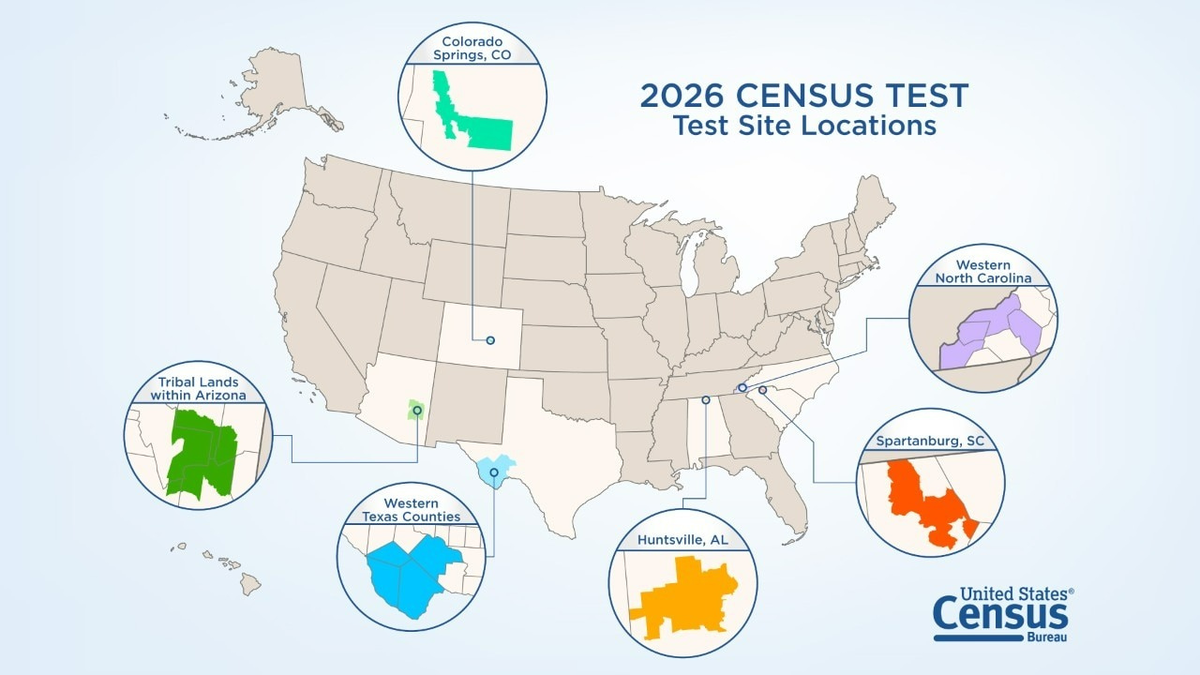Colorado Springs named a 2026 Census test site

COLORADO SPRINGS, Colo. (KRDO) - The U.S. Census Bureau announced the sites for the 2026 Census Test, the first of two major on-the-ground tests planned in preparation for the 2030 Census, according to the United States Census Bureau (USCB)
The USCB says that the 2026 Census Test will evaluate the viability of innovations and enhancements planned for the 2030 Census, with a particular focus on improving the count of hard-to-count and historically undercounted populations.
The Census Bureau plans to conduct 2026 Census Test operations in six locations:
- Colorado Springs, CO (selected areas within the metro area).
- Huntsville, AL (selected areas within the metro area).
- Tribal Lands Within Arizona (Fort Apache Reservation, home to the White Mountain Apache Tribe, and San Carlos Reservation, home to the San Carlos Apache Tribe).
- Spartanburg, SC (selected areas within the metro area).
- Western North Carolina (Cherokee, Graham, Jackson, and Swain counties, and Qualla Boundary, home to the Eastern Band of Cherokee Indians).
- Western Texas (Brewster, Jeff Davis, Pecos, and Presidio counties).
“These locations provide optimal opportunities for us to implement all the changes and enhancements we have planned for the test, under real conditions and on a larger scale than research simulations allow,” said Daniel Doyle, deputy chief of the Census Bureau’s Decennial Census Management Division. “Together, these sites will enable us to test the improvements we’re designing in our efforts to get a complete count of historically undercounted and hard-to-count populations.”
The 2026 Census Test will focus on six operational areas.
- (1) Making it easier for people to respond on their own online, by phone, or by mail
- (2) Improving in-person household data collection
- (3) Improving methods for counting people living in group quarters
- (4) Enhancing outreach efforts to create awareness, build trust, and encourage response
- (5) Enhancing the infrastructure that supports census operations
- (6) Processing data concurrently with data collection
The USCB says that the sites chosen cover areas with a high percentage of historically undercounted populations.
Below is a list of undercounted populations.
- Historically low response rates.
- Tribal areas.
- Rural areas.
- Limited internet or cell phone service.
- A high percentage of households that don't receive mail directly to their address.
- Seasonally vacant housing.
- A high number of multiunit structures and/or hidden units in urban areas.
- Significant housing growth.
- Universities, correctional facilities, military housing, and other types of group quarters.
Colorado Springs was selected due to the high military population.
